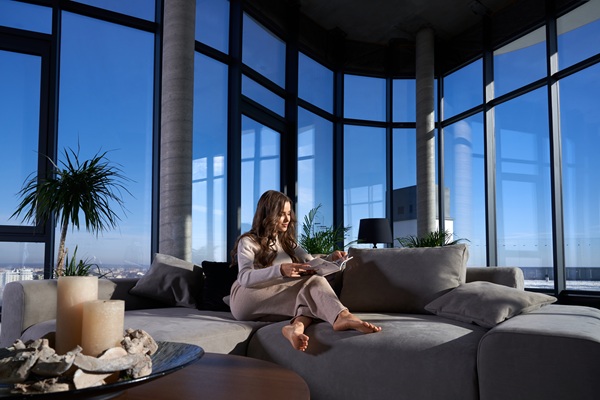|

Window tinting is an effective way to enhance comfort, privacy, and energy efficiency in homes and offices. However, with so many options available, choosing the right window tint can feel overwhelming. Factors like tint type, legal regulations, and specific needs should be carefully considered.
Understanding Different Types of Window Tints
Window tints come in various materials and finishes, each offering unique benefits. Some of the most common types include:
- Dyed Window Tint – A budget-friendly option that absorbs sunlight and reduces glare. It provides privacy but offers limited heat rejection compared to other types.
- Metalized Window Tint – Infused with metallic particles, this tint reflects heat and strengthens glass for added security. However, it may interfere with electronic signals like GPS and cell reception.
- Carbon Window Tint – Known for its matte finish and excellent heat-blocking properties, carbon tint does not fade over time and improves insulation.
- Ceramic Window Tint – The highest-quality option, ceramic tint offers superior heat rejection, UV protection, and durability without affecting visibility or electronic signals.
Experts in the industry, such as those at glazetinting.com.au, recommend choosing a tint based on specific climate needs and privacy preferences.
Considering Your Specific Needs
The best window tint for your space depends on factors like climate, privacy concerns, and intended use. Ask yourself:
- Do you need heat reduction? If you live in a hot climate, ceramic or metalized tints are ideal.
- Is privacy a priority? Dyed or reflective tints work well for obscuring views from the outside.
- Are you concerned about security? Thicker films with shatter-resistant properties provide additional protection.
- Do you want to prevent furniture fading? Look for tints with high UV-blocking capabilities.
By identifying your primary needs, you can choose a tint that aligns with your goals.
Checking Local Tinting Laws
Before installing window tint, it’s essential to check legal restrictions in your area. Many regions have laws that regulate how dark or reflective window tints can be, especially for vehicles. Residential and commercial buildings usually have more flexibility, but confirming compliance with local regulations can prevent any issues.
Balancing Aesthetics and Functionality
While window tinting serves practical purposes, it also affects the look of a building. Lighter tints maintain a natural appearance, while darker shades offer a sleek, modern finish. Some homeowners prefer neutral tones that blend seamlessly, whereas businesses might opt for mirrored or reflective films for added professionalism. Choosing a tint that complements your space ensures a balance between style and function.
Professional Installation vs. DIY
Although DIY window tinting kits are available, professional installation ensures optimal results. Trained installers apply the film evenly, prevent bubbles, and use high-quality materials that last longer. If precision and longevity are priorities, investing in professional services is a worthwhile decision.
Choosing the right window tint is about balancing functionality with personal needs. Whether you’re looking to reduce energy costs, enhance privacy, or protect your interior from UV damage, there's a tint that suits every requirement.
Back to Top
|
|







